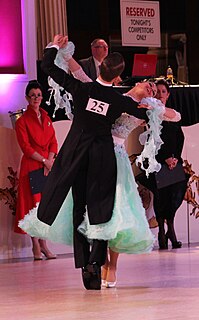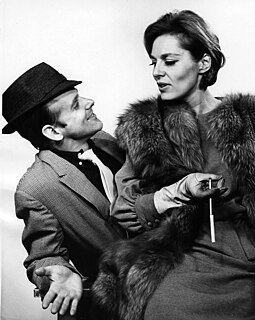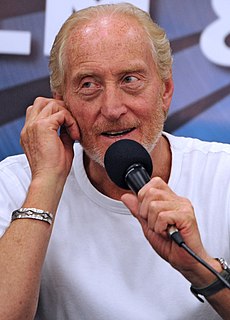
Ballroom dance is a set of partner dances, which are enjoyed both socially and competitively around the world. Because of its performance and entertainment aspects, ballroom dance is also widely enjoyed on stage, film, and television.

Dance is a performing art form consisting of purposefully selected sequences of human movement. This movement has aesthetic and symbolic value, and is acknowledged as dance by performers and observers within a particular culture. Dance can be categorized and described by its choreography, by its repertoire of movements, or by its historical period or place of origin.

Flamenco, in its strictest sense, is a professionalized art-form based on the various folkloric music traditions of southern Spain in the autonomous communities of Andalusia, Extremadura and Murcia. In a wider sense, it refers to these musical traditions and more modern musical styles which have themselves been deeply influenced by and become blurred with the development of flamenco over the past two centuries. It includes cante (singing), toque, baile (dance), jaleo, palmas (handclapping) and pitos.

The waltz is a ballroom and folk dance, normally in triple (help·info) time, performed primarily in closed position.

Irish dance or Irish dancing is a group of traditional dance forms originating from Ireland, encompassing dancing both solo and in groups, and dancing for social, competitive, and performance purposes. Irish dance in its current form developed from various influences such as French quadrilles and English country dancing throughout the 18th and 19th centuries. Dance was taught by "travelling dance masters" across Ireland throughout this period, and separate dance forms developed according to regional practice and differing purposes. Irish dance became a significant part of Irish culture, particularly for Irish nationalist movements. From the early 20th century, a number of organisations promoted and codified the various forms of dance, creating competitive structures and standardised styles.

Bharatanatyam originally known as Sathiraattam(சதிராட்டம்), is a major genre of Indian classical dance that originated in Tamil Nadu. Traditionally, Bharatanatyam has been a solo dance performed exclusively by women, and it expressed South Indian religious themes and spiritual ideas, particularly of Shaivism, Vaishnavism and Shaktism.

Fred Astaire was an American dancer, singer, actor, choreographer and television presenter. He is widely regarded as the most influential dancer in the history of film.

Robert Louis Fosse was an American dancer, musical-theatre choreographer, and theatre and film director. He is known for directing and choreographing musical works on stage and screen, including the stage musicals The Pajama Game (choreography) in 1954 and Chicago in 1975 and the film Cabaret in 1972.

Strictly Come Dancing is a British television dance contest in which celebrities partner with professional dancers to compete in mainly ballroom and Latin dance. Each couple is scored out of 10 by a panel of judges. The format has been exported to over 40 other countries, licensed by BBC Worldwide, and has also inspired a modern dance-themed spin-off Strictly Dance Fever. The Guinness Book of Records has named Strictly to be the world’s most successful reality TV format. The show is currently presented by Tess Daly and Claudia Winkleman.
Indian classical dance, or Shastriya Nritya, is an umbrella term for various performance arts rooted in religious Hindu musical theatre styles, whose theory and practice can be traced to the Sanskrit text Natya Shastra.
The Dance Club Songs chart is a weekly chart published exclusively by Billboard in the United States. It is a national survey of the songs which are the most popular in nightclubs across the country and is compiled from reports from a national sample of disc jockeys. It was launched as the Disco Action Top 30 chart on August 28, 1976, and became the first chart by Billboard to document the popularity of dance music. Since its inception, several artists have set various records and garnered multiple achievements. In January 2017, Billboard proclaimed Madonna as the most successful artist in the history of the chart, ranking her first in their list of the 100 top all time dance artists and Janet Jackson being the second most successful dance club artist of all-time; Madonna also holds the record for the most number-one songs, with 46. Katy Perry holds the record for having eighteen consecutive number-one songs. Perry's third studio album, Teenage Dream (2010), became the first album in the history of the chart to produce at least seven number-one songs between 2010–12, a record it held solely until Rihanna's eighth studio album Anti also produced seven chart toppers through 2016-17. Rihanna is the only artist to have achieved five number-one songs in a calendar year.

Dancing with the Stars is an American dance competition television series that premiered on June 1, 2005, on ABC. It is the US version of the UK series Strictly Come Dancing. The show is hosted by Tom Bergeron, alongside Erin Andrews, who became co-host in season eighteen. Lisa Canning was co-host in the first season, Samantha Harris co-hosted seasons two through nine and Brooke Burke-Charvet in seasons ten through seventeen. The twenty-seventh season premiered on September 24, 2018, and its spin-off Dancing with the Stars: Juniors premiered on October 7, 2018. Dancing with the Stars will not premiere for a spring season in 2019, but is set to return in the fall of 2019.

Walter Charles Dance, is an English actor, screenwriter, and film director. Some of his highest profile roles are Tywin Lannister in HBO's Game of Thrones (2011–2015), Guy Perron in The Jewel in the Crown (1984), Sardo Numspa in The Golden Child (1986), Jonathan Clemens in Alien 3 (1992), Benedict in Last Action Hero (1993), the Master Vampire in Dracula Untold (2014), Lord Havelock Vetinari in Terry Pratchett's Going Postal (2010), Alastair Denniston in The Imitation Game (2014), and Emperor Emhyr var Emreis in The Witcher 3: Wild Hunt (2015).
Turkish folk dances are the folk dances of Turkey. Facing three seas, straddling important trade routes, Turkey has a complex, sophisticated culture, reflected in the variety of its dances. The dominant dance forms are types of line dance. There are many different types of folk dances performed in various ways in Turkey, and these reflect the cultural structure of each region. The Bar in Erzurum province, the Halay in the East and Southeast, the Hora in Thrace, the Horon in the Black Sea, Spoon dances in and around Konya and Lezginka in Kars and Ardahan are the best known examples of these.

Julianne Alexandra Hough is an American dancer, actress and singer. She is a two-time professional champion of ABC's Dancing with the Stars. She was nominated for a Creative Arts Primetime Emmy in 2007 for Outstanding Choreography in season five of the show. Her first leading acting role was in the 2011 film remake of Footloose. In September 2014, Hough joined Dancing with the Stars as a permanent fourth judge. Along with her brother Derek Hough and Tessandra Chavez, she won the Primetime Emmy Award for Outstanding Choreography in 2015. In 2016, she played Sandy in the live Fox television production of Grease.

Derek Hough is an American professional Latin and ballroom dancer, choreographer, actor and singer.
Dance Moms is an American reality television series that debuted on Lifetime on July 13, 2011. Created by Collins Avenue Productions, the show originally followed the early training and careers of children in dance and show business under the tutelage of Abby Lee Miller, as well as the interactions of the instructor and the dancers with their sometimes bickering mothers. Cheryl Burke replaced Laurieann Gibson during the second half of season 7. Set originally in Pittsburgh, Pennsylvania, and later in Los Angeles, California, the show is primarily filmed at the Abby Lee Dance Company (ALDC) studios. The show returns for its eighth season on June 4, 2019.
Canadian stepdance, also known as Maritimes stepdance, is a unique style of stepdance in Canada, stemming from European origins including France, Scotland and Ireland. Canadian stepdancing involves fast dancing to fiddle music using shoes with taps designed to accentuate the dancer's rhythmical, drumming foot movements. Dancers generally require little dance space to perform their routines. Some styles of Canadian stepdancing include upper-body postures that are relatively relaxed compared with older stepdance styles, allowing occasional arm movements that flow with the rhythm of the dance, or hands on hips.














